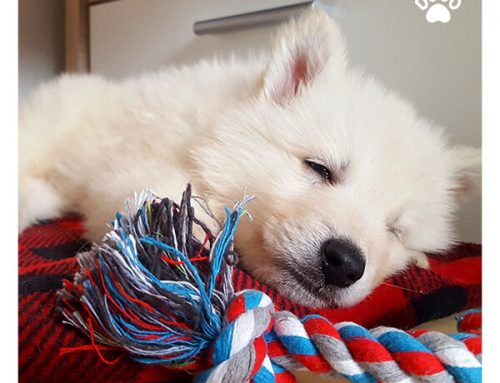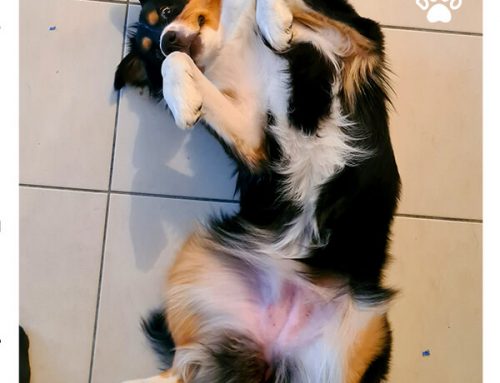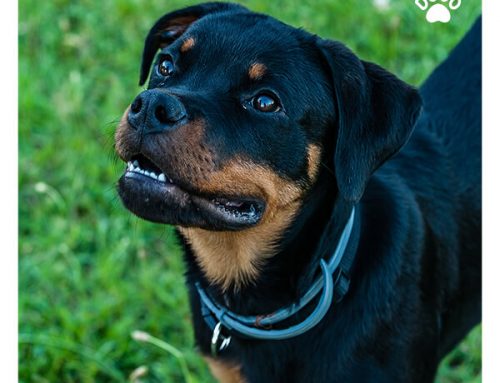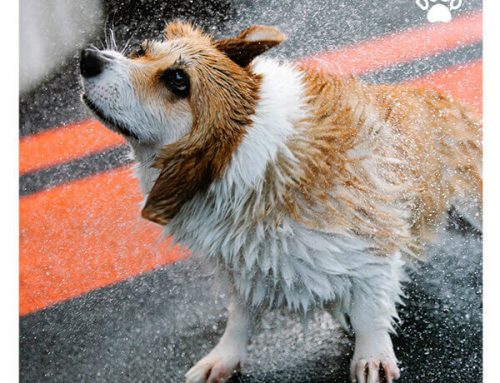
Confusion and Attempt to Understand
It is usually a gaze with the head tilted to one side. The gaze is questioning, confused. These looks represent a desire to understand. There is often a characteristic frown between the eyes. The body is usually relaxed, except for the listening and alert ears. The pooch may be visibly panting due to nascent frustration and stress resulting from misunderstanding. It very often occurs during play, obedience training, when you do something strange-looking to your dog, or when you speak words to your pet that are unclear to them.
If your dog is confused and trying to understand what you mean, it’s important to offer clear communication. Use simple language and commands to avoid confusion. Positive reinforcement is also an effective way to train your dog and help them understand what you expect from them. Additionally, if your dog seems stressed or frustrated, take a break from training or playtime to allow them to calm down. This can prevent your dog from becoming overwhelmed and reduce the likelihood of aggressive behavior.
If you see this look, take it as the following message: “I don’t understand what you mean, explain it to me!”.
1. Anger
Direct, demanding, and penetrating gaze. Very often with invisible eye whites. The facial expressions are pulled to the sides, seemingly resembling a smile. The dog’s body is tense, ready for a possible attack. The pooch may lick rapidly, extending and retracting their tongue. Such a look may appear when the dog doesn’t feel comfortable – e.g., when you get too close, exaggerate petting, touch their favorite toy, when you disturb them while eating, sleeping, etc.
When you see such a look, you should understand it as a request: “I’m upset, so you better leave me alone! If you don’t, I might attack you!”.
2. Observation of the Potential Prey
It is a penetrating and long gaze. It is often accompanied by a lowered head and lifted front paw. Sometimes the dog camouflages themselves by lying down on the ground – this way, they make their observation safer and less visible. It is a characteristic behavior for herding dogs, whose task is to control cattle constantly, or for hunting dogs, which have to look out for prey in the field. Such stares most often occur while playing together or during a walk with other dogs, animals, people, bikes, cars, etc. After gazing, your pup may proceed to chase, bite, paw, and tear the object.
If your dog is observing potential prey, it’s important to keep them under control. Use a leash or other form of restraint when walking your dog in areas where they may encounter wildlife or other animals. Supervise your dog during playtime with other pets to ensure that their behavior does not become aggressive or dangerous. Additionally, consider enrolling your dog in training classes to help them learn impulse control and proper behavior around other animals. By teaching your dog to remain calm and controlled in these situations, you can prevent them from becoming a danger to themselves or others.
By these stares, your dog is saying: “Look out, I am concerned! I am alert and ready to attack!”.
3. The Asking Gaze

By staring this way, the dog says: “Please, please, please! Give me this/play with me/give me your attention/etc.”
4. Friendly Look
Soft gaze with a relaxed body – relaxed ears and tail. Eyes are not penetrating or threatening, the white of the eye is visible, pupils normal. In this situation, the canine is usually trying to make eye contact with their parent. Research shows that this gaze increases the production of oxytocin, which in dogs stimulates trust, submissiveness, willingness to cooperate, etc. It results in an improved mutual relationship between the pet and their parent.
By this look, your pet is saying: “I trust you and would like our bond to be even stronger!”
Analyze and Respond
Above, we gave you some possible reasons why does your dog stare at you. The next time you catch your dog staring at you, analyze the situation carefully and their body language. Finally, draw the appropriate conclusions and react accordingly.






